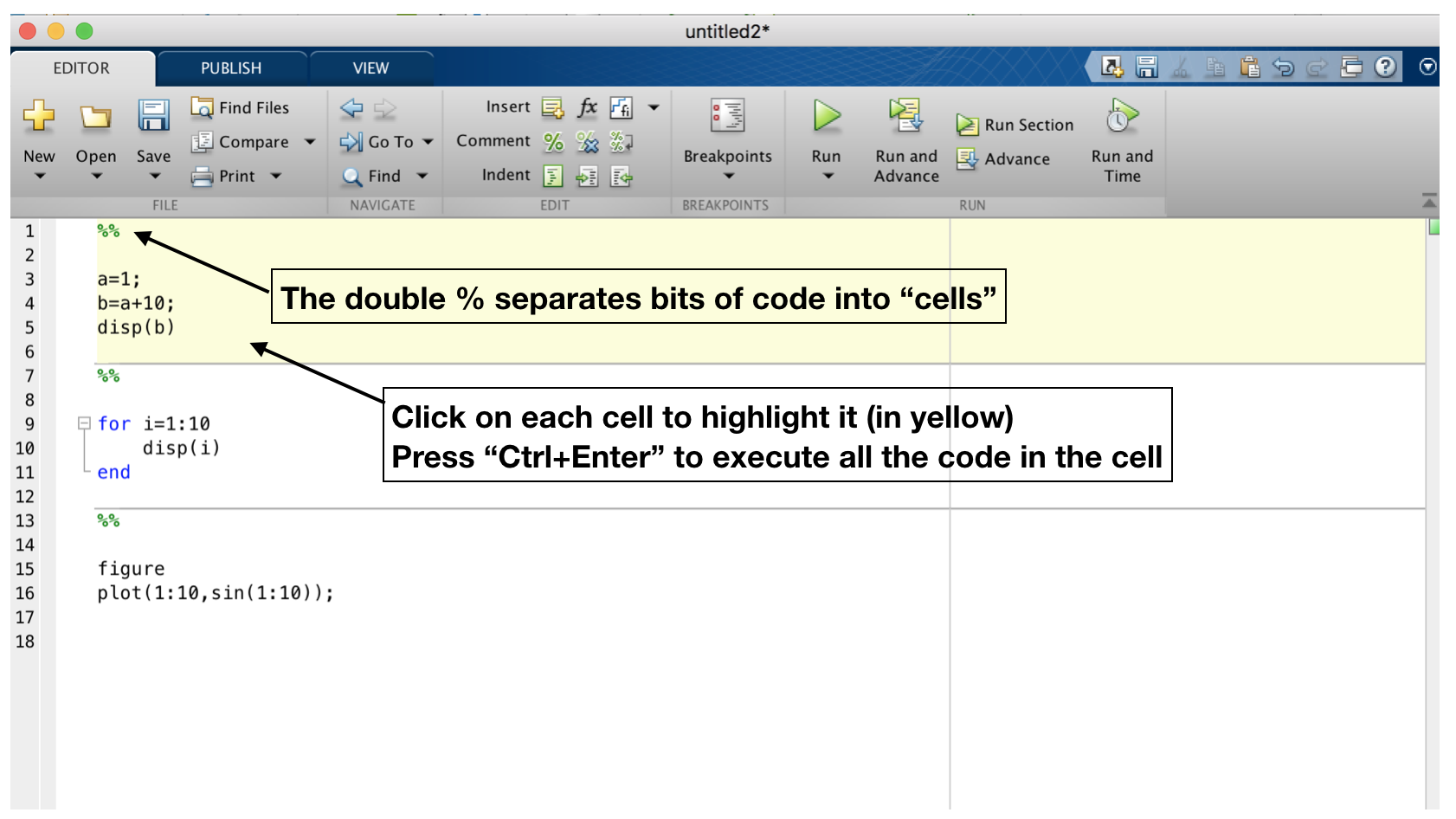
Generally, it is better practice to assign character arrays or strings to cells. However, the functionality of the nested loop structure remains intact.The curly braces are used with cells, exclusively and there is no need to use range indexing as you do (i, 1:end) The only problem is that within the nested loop the outer x is hidden by the nested (local) x and therefore cannot be referenced. The fact that the nested loop uses the same identifier makes no difference to how values from that array are referenced.


As such, x is only a reference to an 'array' (a coherent, consecutive memory structure) which is appropriatelly referenced with every consequent loop (nested or not). The reason is that, as with everything else in MATLAB, the x counter is also a matrix-a vector to be precise. You wouldn't expect this to work properly but it does, producing the following output: 1,2,3,4,5,6,7,8,9,10,
For loops matlab code#
Look at the code snippet below: for x = 1:10 I came across it some years back and I couldn't understand why it was happening, but after working with MATLAB for some time I was able to figure it out. This is not something you will see in other programming environments. We loop through the gap width in the outer loop and use it within the inner loop to iterate through the vector: 1 2 3 4 5 6 7 8 9 10 11 12 This time we use the nested loop to format the output, and brake the line only when a new gap ( j) between the elements was introduced. Here is another example: N = 12 įprintf('%d ',k) % FPRINTF prints the number k proceeding to the next the line Here we want to compute all the Fibonacci series, but to display only the nth element each time, so we get 3Īnother thing we can do is to use the first (outer) iterator within the inner loop. We can also use nested loops to combine between tasks to be done each time, and tasks to be done once in a several iterations: N = 10 Ī1 = 0 % the first element in Fibonacci seriesĪ2 = 1 % the secound element in Fibonacci seriesĪn = a1 + a2 % compute the next element in Fibonacci seriesĪ1 = a2 % save the previous element for the next iterationĪ2 = an % save ht new element for the next iteration We use 2 iterators to display all combinations of elements from abc and 1:m, which yields: a1 % so it can be concataneted with the letter in c Consider the following loops: ch = 'abc' ĭisp() % NUM2STR converts the number stored in k to a charachter, Loops can be nested, to preform iterated task within another iterated task. For example, the above loop can be replaced by my_vector = my_vector + 1. Most simple things done with for loops can be done faster and easier by vectorized operations. each column of the iterated matrix displayed, each column printed on each call of display. (The row vector version is a normal case of this, because in Matlab a row vector is just a matrix whose columns are size 1.) If the right-hand side of the assignment is a matrix, then in each iteration the variable is assigned subsequent columns of this matrix. Hence, the two following blocks of code are identical: A = Īnd the following are identical as well: A = Īny row vector will do. (The 1:n version is a normal case of this, because in Matlab 1:n is just syntax for constructing a row vector of. The for loop assigns a different element of this vector to the variable each run. The left-hand side of the assignment can be any valid variable name. The right-hand side of the assignment in a for loop can be any row vector. This time we use both the n and k in the loop, to create a "nested" display: 5 4 3 2 1 The loop will execute the inner statement(s), everything between the for and the end, for n times (5 in this example): 1ĭisp(n-k+1:-1:1) % DISP uses more "clean" way to print on the screen

Say we want to display the numbers between 1 to n, we can write: n = 5 The simplest case is just preforming a task for a fixed known number of times. This can be detected by slightly altering the syntax. For performance reasons, Matlab actually treats any a:b or a:c:b specially by not creating the row vector entirely, but instead creating each element one at a time. The basic example treats 1:n as a normal instance of creating a row vector and then iterating over it. Special case performance of a:b in right-hand side I = 5 % Fail at trying to terminate the loop % Prints once: Īltering the iteration variable changes its value for the current iteration, but has no impact on its value in subsequent iterations.

(There is actually no distinction in Matlab.) The for loop runs once with the loop variable set to the column. A column vector is treated like a matrix with one column. A common source of bugs is trying to loop over the elements of a column vector.


 0 kommentar(er)
0 kommentar(er)
